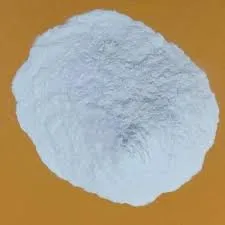
nov. . 13, 2024 15:26 Back to list
hydroxyethyl cellulose structure
The Structure and Applications of Hydroxyethyl Cellulose
Hydroxyethyl cellulose (HEC) is a versatile and widely used cellulose derivative that has gained prominence in various industrial and pharmaceutical applications. It is a water-soluble, non-ionic polymer derived from cellulose, a natural polymer found in the cell walls of plants. The structure of hydroxyethyl cellulose is a crucial aspect that determines its physical and chemical properties, influencing its functionality in diverse fields.
Chemical Structure of Hydroxyethyl Cellulose
Hydroxyethyl cellulose is formed through the etherification of cellulose with ethylene oxide. The hydroxyl groups (-OH) present in cellulose are replaced with hydroxyethyl groups (-O-CH2-CH2-OH). The degree of substitution, which indicates the number of hydroxyl groups replaced with hydroxyethyl groups, can vary, affecting properties such as solubility, viscosity, and gelling behavior. Typically, the degree of substitution in HEC ranges from 0.2 to 2.5. This modification not only enhances the solubility of cellulose in water but also imparts unique rheological properties, making it an invaluable component in various formulations.
The repeating units in HEC consist of glucose monomers linked by β-1,4-glycosidic bonds, similar to the structure of native cellulose. The hydroxyethyl groups attached to the polymer chain create a hydrophilic character, allowing HEC to dissolve in cold or hot water, forming a viscous solution. The flexibility of the polymeric chain and the spatial arrangement of hydroxyethyl groups contribute to its viscosity and stability characteristics. This unique structural composition grants HEC the ability to act as a thickening agent, stabilizer, and film-forming agent in many applications.
Applications of Hydroxyethyl Cellulose
1. Cosmetics and Personal Care Products The thickening and gelling properties of HEC make it a popular ingredient in personal care products such as shampoos, conditioners, lotions, and creams. It aids in enhancing the texture and consistency of these products, providing a smooth and viscous feel, while also aiding in the stabilization of emulsions. Its mild nature and biocompatibility make HEC suitable for formulations intended for sensitive skin.
hydroxyethyl cellulose structure

2. Pharmaceutical Industry In the pharmaceutical sector, hydroxyethyl cellulose is utilized as a binder, thickener, and controlled-release agent in tablet formulations, gels, and ointments. Due to its the ability to form viscous solutions, HEC can modify the release rates of active pharmaceutical ingredients, improving the efficacy and bioavailability of medications. Furthermore, it is often used as an excipient in ophthalmic solutions due to its eye-friendly properties, providing lubrication and enhancing the retention time of the solution on the eye surface.
3. Construction Industry HEC is employed in construction materials such as mortars, tile adhesives, and paints. It contributes to improved workability, water retention, and adhesion properties. As a water-retaining agent, it ensures that cementitious materials remain workable for an extended period, facilitating better application and finish.
4. Food Industry While not directly a food additive, HEC finds applications in food processing systems such as emulsions, dressings, and sauces. It can stabilize these mixtures, preventing phase separation and retaining the desired texture.
5. Oil and Gas Industry Hydroxyethyl cellulose is used in drilling fluids and as a thickening agent in hydraulic fracturing processes. Its rheological properties allow it to control the viscosity of the fluid, enhancing the efficiency of drilling operations and the extraction of oil and gas.
Conclusion
The structure of hydroxyethyl cellulose, with its modified cellulose backbone and hydroxyethyl substituents, endows it with versatile properties that cater to a wide range of applications. Its effectiveness as a thickening agent, stabilizer, and binder underscores its significance across many industries. As ongoing research continues to unveil new uses and formulations, hydroxyethyl cellulose is poised to remain a vital component in advancing technology and improving quality in various applications. Its natural origin, combined with its adaptability, makes HEC a prime example of how chemical modifications can lead to enhanced material performance in our daily lives.
-
Versatile Hpmc Uses in Different Industries
NewsJun.19,2025
-
Redispersible Powder's Role in Enhancing Durability of Construction Products
NewsJun.19,2025
-
Hydroxyethyl Cellulose Applications Driving Green Industrial Processes
NewsJun.19,2025
-
Exploring Different Redispersible Polymer Powder
NewsJun.19,2025
-
Choosing the Right Mortar Bonding Agent
NewsJun.19,2025
-
Applications and Significance of China Hpmc in Modern Industries
NewsJun.19,2025







